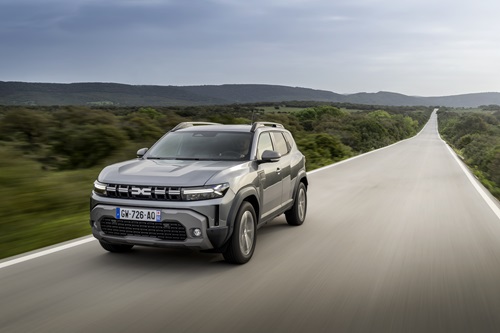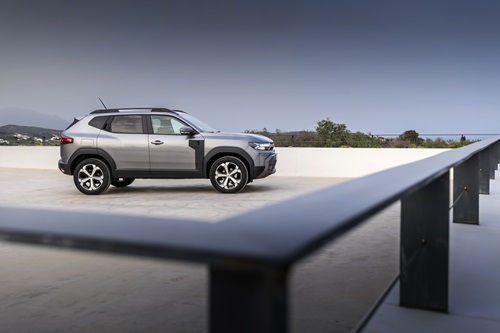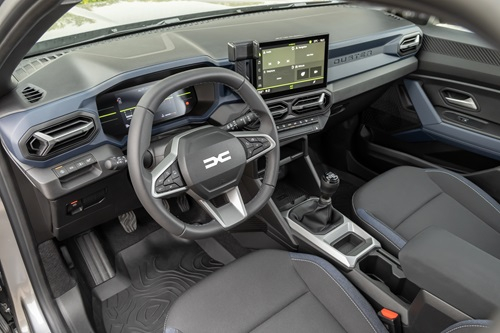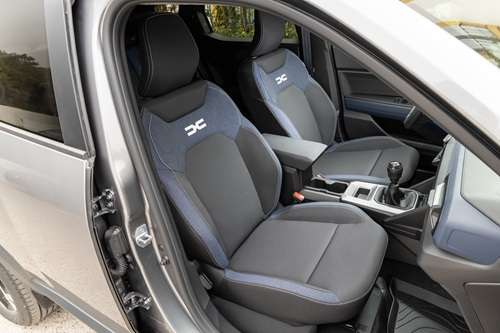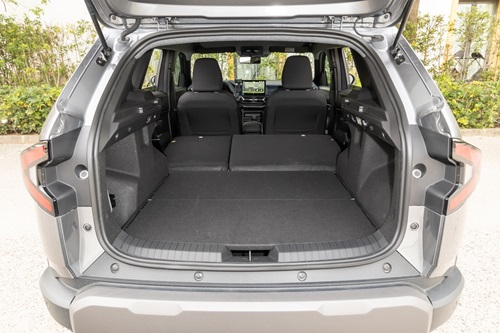The All-New Dacia Duster opens the next chapter in the story of a model that has grown into a standard-setter in the market. It is an all-round icon, encapsulating everything the Dacia brand stands for: ‘Robust and Outdoor’, ‘Essential but Cool’, and ‘Eco-Smart’. Duster was born in 2010, overhauled for the first time in 2017.
Dacia has reinvented Duster’s design. It still has the striking looks that propelled the previous generations to the top – especially its solid, sturdy SUV character – but pushes them further with Dacia’s new, distinctive design.
David Durand, Dacia Design Director, said: “Before even starting work on All-New Duster’s style, we honed its proportions, to find a strong, balanced posture. When you get the proportions right early on, you don’t need artifices to tweak style later.”
Dacia’s philosophy of providing all the essentials applies to the All-New Duster’s design as much as every other model.
The team started simply, by looking at the cabin, bonnet and wings. Then they assembled them into the whole car to give the model a modern, well-built style, with deliberately taut, self-confident lines.
The simple shapes and volumes add to the design’s power, including the sharp, vertical face, chamfered wheel-arch guards, large tailgate and side windows reaching seamlessly from bow to stern.
The All-New Duster is shielded with a stylish belt wrapping all the way around it. The side underbody shields connect to the hallmarks, then to the wheel-arches, which in turn connect to the front and rear bumpers, making the All-New Duster more robust and ready for the outdoors than ever.
The All-New Duster is built on the CMF-B platform, which plays a central role in Dacia’s industrial strategy. This competitive and extremely flexible platform was first used on the latest Sandero models, then on Jogger. It provides all the versatility Dacia needs to optimally deploy its ambitious product plan.
On the CMF-B platform, the All-New Duster has more space for passengers and luggage than the previous generation, while maintaining the same overall length of 4.34 metres. The platform’s advanced engineering also reduces vibration and noise from the road, enhancing driver comfort. It provides a quantum leap in driving pleasure with an unmatched connection to the road.
The CMF-B platform has also embarked the All-New Duster on its journey to electrification as it can accommodate powertrains using mild-hybrid and full-hybrid technologies.
The development of the All-New Duster has significantly improved its dynamic behaviour by optimising the anti-roll bars. By increasing the stiffness, there is a significant reduction in body roll (down 21% in the 4×2), which translates into greater stability when cornering or changing direction. The 4×4 version also benefits (down 17%) for greater visibility on all types of roads. The greater stiffness of the chassis is compensated for during off-road driving by an all-new electronic management system.
Damping settings, power steering ratio and configuration, and tyres have also evolved. They have been reworked to ensure a more precise response in different driving conditions.
Rolling noise is improved by -2dB on average, significantly reducing the overall noise level inside the vehicle and providing a more pleasant driving experience for passengers (-3db equals two times less noise!).
NEW HYBRID POWERTRAINS
- All-New Dacia Duster HYBRID 140: This powertrain, which Dacia adopted for Jogger in early 2023, is now available with All-New Duster. It is built with technologies that Renault Group has tried and tested, and comprises a 4-cylinder, 1.6-litre, 94 hp petrol engine, two electric motors (a 49 hp powerplant and a high-voltage starter generator), and an electric automatic gearbox (with 4 engine ratios and 2 motor ratios). This combined technology is possible because the system is clutchless. The regenerative braking, the 1.2 kWh (230 V) battery’s high energy recovery capacity and the gearbox’s efficiency make it possible to drive in all-electric mode up to 80% of the time in cities, which reduces consumption by 20% (mixed cycle) to 40% (urban cycle). The engine always starts with electric power.
- All-New Dacia Duster TCe 130: This is the first time Dacia has used this powertrain, which provides an initial degree of electrification. It combines a new-generation 3-cylinder, 1.2-litre turbocharged petrol engine using the Miller cycle (reduced pump losses optimise efficiency) and a 48 V mild hybrid motor. This motor aids the internal combustion engine when the car starts or accelerates, reducing average consumption and CO2 emissions by about 10% compared to an internal combustion engine with equivalent power. It also provides more power during acceleration than the existing TCe 130 model, making the vehicle more responsive and smoother to drive. The regenerative braking system charges the 0.8 kWh battery without making a noticeable difference for the driver. The TCe 130 powertrain is available with a 6-speed manual gearbox in the 4×2 and 4×4 versions.
- All-New Dacia Duster TCe 100 Bi-Fuel: Dacia, the unchallenged LPG leader in Europe, is the only carmaker to provide a dual fuel (petrol and LPG) option on all its internal-combustion models, under the Bi-Fuel label. The All-New Duster comes with this built-in tried and tested technology that guarantees safety and reliability. When running on LPG, the All-New Duster TCe 100 Bi-Fuel on average releases 10% less CO2 than a comparable petrol engine. It can drive up to 1,400 km (1,388 km according to WLTP cycle) with its two tanks holding 100 litres between them – 50 litres of petrol and 50 litres of LPG (the latter is under the boot floor, so it does not affect cargo capacity). A button built seamlessly into the dashboard switches the engine from one fuel to the other quickly and imperceptibly.
